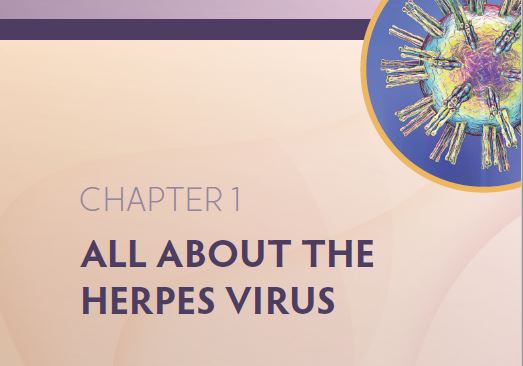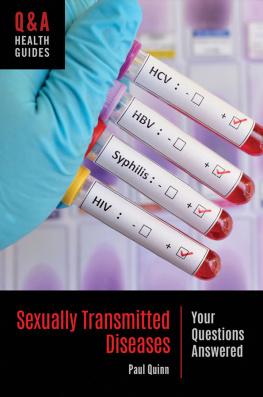Published in 2022 by The Rosen Publishing Group, Inc.
29 East 21st Street, New York, NY 10010
Copyright 2022 by The Rosen Publishing Group, Inc.
First Edition
Portions of this work were originally authored by Jeri Freedman and published as Your Sexual Health: Herpes. All new material in this edition was authored by Kathleen Connors.
All rights reserved. No part of this book may be reproduced in any form without permission in writing from the publisher, except by a reviewer.
Library of Congress Cataloging-in-Publication Data
Names: Connors, Kathleen, author.
Title: What is herpes? / Kathleen Connors.
Description: New York : Rosen Publishing, [2022] | Series: Sexual health awareness | Includes index.
Identifiers: LCCN 2021029088 (print) | LCCN 2021029089 (ebook) | ISBN 9781499472226 (library binding) | ISBN 9781499472219 (paperback) | ISBN 9781499472233 (ebook)
Subjects: LCSH: Herpesvirus diseases--Juvenile literature.
Classification: LCC QR201.H48 C66 2022 (print) | LCC QR201.H48 (ebook) |
DDC 614.5/812--dc23
LC record available at https://lccn.loc.gov/2021029088
LC ebook record available at https://lccn.loc.gov/2021029089
Manufactured in the United States of America
Some of the images in this book illustrate individuals who are models. The depictions do not imply actual situations or events.
CPSIA Compliance Information: Batch #CWRYA22. For further information contact Rosen Publishing, New York, New York at 1-800-237-9932.
CONTENTS
CHAPTER 1
All About theHerpes Virus
CHAPTER 2
Herpes in theBody
CHAPTER 3
Getting Help
CHAPTER 4
Risks, Pressures,and Prevention
CHAPTER 5
Learning to LiveWith Herpes
INTRODUCTION
Theres something inherently scary in the discussion of sexually transmitted diseases, or STDs. Many have very serious health consequences that can change the course of a persons life. The STDs chlamydia and gonorrhea can have complications that can even eliminate a persons ability to have biological children. Some, like human papillomavirus (HPV), can cause cancer. Herpes, while serious, is often an STD that an infected person can live a long and happy life with. There are cases of herpes that are more damaging, but they usually occur in those with a compromised immune system.
Despite that good news, a herpes diagnosis isnt to be taken lightly. Its a lifelong infection that many people have. Perhaps because its long-term effects are often viewed as simply an annoyance rather than a real health condition, many infected people still engage in riskier sexual behaviors. They may not communicate their disease to potential partners if their herpes isnt visible at the time of a sexual encounter. Additionally, some people who engage in unsafe sex may carry herpes without knowing it. Not everyone who has herpes has the telltale blisters and sores. These are just some of the reasons that the statistics about those with herpes are startingly high. The Centers for Disease Control (CDC) reports that one in every six Americans between the ages of 14 and 49 has genital herpes.
Many teens and young adults learn about STDs sometimes called sexually transmitted infections (STIs) or venereal diseases (VD)in health classes, but this level of education isnt often presented every year in school. In addition, the facts of how one can contract an STD can get lost in the noise of the medias portrayal of sexual relationships and perceived pressure from peers. Still, STDs are a big problem among young people in the United States. The CDC estimates that half of the new STD and STI diagnoses each year are from those 15 to 24 years old. Yet, TV shows and movies featuring young people engaging in risky sexual behavior with few consequences are still the norm. Teens may perceive that this behavior is normal among their peers as well. However, in 2015 the Pew Research Center reported that two-thirds of teens who date said they had not yet had sex.

TV shows like Riverdale often show teenagers having sex, but they often highlight STDs as a potential consequence.
It can seem daunting and even unnecessary to educate yourself about STDs before you contract one. However, because of how common they are among young people, its wise to both know what to look for and how to prevent contracting one. If you are sexually active in any way or plan to become sexually active, having tough discussions with potential sexual partners is the first step in protecting yourself from herpes. The next is choosing to abstain from sexual behavior if you are unsure about a person or situation or using proper protections that prevent the transmission of herpes and other STDs. If you do contract herpes, its important to know how to deal with the physical and emotional effects of it. You also need to consider how to talk to future sexual partners and your medical providers about a herpes diagnosis. Contracting herpes isnt the end of your romantic life, but it is something youll need to consider in every relationship that follows. Learning about STDs isnt just acquiring knowledge. Its showing respect and care for your health and the health of those you love.

S exually transmitted diseases (STDs) are illnesses one person passes to another when engaging in sexual activity. They can be passed on through sexual intercourse, but that isnt the only way an STD can move from one partner to another. STDs can be passed on through any sexual behavior, including oral and anal sex. That means that STDs can affect any person who has any kind of sex, regardless of age, sex, gender identity, or sexual preference. No one is completely protected from STDs unless they abstain from engaging in sex with a partner.
Like other diseases, STDs can be caused by bacteria, parasites, and viruses. All kinds of herpes, including both oral and genital herpes, are caused by a virus.

STDs like herpes do not discriminate. They simply spread when the conditions are right.
VIRUSES
Understanding how viruses work helps explain how herpes moves from person to person and grows throughout a body it enters.
A virus is a microscopic particle that consists of a core of DNA (deoxyribonucleic acid) surrounded by a protective shell. The shell of the virus contains projections that allow it to attach to a cell and inject its DNA into it. The DNA contains the genetic blueprint for making more virus particles.
To reproduce copies of itself, a virus must take over a cell in a living organism. Cells in the body consist of a central area, called the nucleus, surrounded by a membrane. Viruses like herpes infect people by attaching to the cell membrane and passing into the cells nucleus, which contains the chromosomes that carry the cells DNA. The cell has the ability to copy these chromosomes to make more cells like itself. When the virus invades a cell, it injects its DNA into the cells nucleus. The virus uses the cells own mechanisms to make copies of the viral DNA instead of the cells and to encase the new DNA in copies of its own outer coating. When the cell is filled with copies of the virus, it bursts open. The virus spreads to nearby cells, and the process is repeated.






















